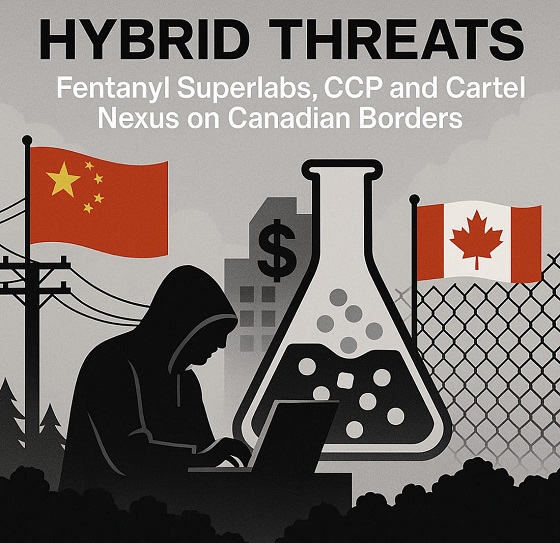International
UN report calls for ban on sex changes for children, declares transgenderism a threat to women

From LifeSiteNews
The stunning report from the United Nations warns against an international push to erase women and girls.
A United Nations draft report by the special rapporteur on violence against women affirmed what many critics have long warned: that there is a “concerted international push (to) erase” women and girls, and that gender dysphoria is “socially contagious.”
The report, titled “Sex-based violence against women and girls: new frontiers and emerging issues: Report of the Special Rapporteur on violence against women and girls,” was compiled by Reem Alsalem of the Office of the United Nations High Commissioner for Human Rights (OHCHR), and warns that transgender ideology has become a threat to women.
Alsalem’s report is stunning considering that it comes from a United Nations office. For example, she warns that transgender ideology is resulting in the “erasure” of women:
Recently, there has been a concerted international push to delink the definition of men and women from their biological sex and erase the legal category of “women.” Such efforts have undermined the practical achievement of equality between men and women. Women are therefore being denied their rightful recognition as a distinct category in law and society. It is a form of “coercive inclusion” that relies on the expectation that women will be kind enough to sacrifice their own recognition and protection for the sake of others.
That, in so many words, is precisely what those of us critical of transgender ideology have been saying for years. Indeed, she goes on to condemn the purging of female-specific terms from language, pinpointing the terminology I have been writing about in this space for a decade:
The suppression of women in language and law occurs in several forms: by replacing sex-specific language with neutral language; by reinterpreting sex-specific language to refer to gender identity rather than sex; and by referring to females in dehumanizing, biologically reductive terms such as “birthing persons,” “menstruaters/bleeders” or “vagina havers” with “front holes.” Such a framing is accompanied by describing the distinction between male and female itself as “biological essentialism” and “an intrinsic expression of patriarchal structures,” rather than the material reality onto which oppressive gender norms and stereotypes are imposed.
Consider: That paragraph was not written by a conservative commentator or gender-critical feminist. It was penned by the head of a United Nations office. In fact, Alsalem also uses phrases that indicate an unwillingness to recognize “transgender identities” themselves as valid; she refers, at one point, to the “effort to provide recognition for males who identify as women or girls,” deliberately avoiding the approved ideological language of “transgender women” or “transgender girls.” Several pages later, after condemning governments for not collecting sex-specific data, she also takes a shot at the pornography industry, condemning the “system of pornography, which presents violent and dehumanizing depictions of women.”
Alsalem’s report reads like an outright rejection of the transgender agenda. She states that gender dysphoria is “socially contagious.” She praises the UK Supreme Court’s ruling that the legal definition of woman refers to biological sex,” stating that it “protects women and girls under a distinct category.” She even refers, at one point, to the “harmful consequences of social and medical transitioning of children” in a truly bombshell section that rejects the concept of “gender-affirming care” almost entirely, which I will quote in full:
There is also a significant co-occurrence of what is known as gender dysphoria or incongruence and autism spectrum disorder diagnoses. Research suggests that the odds of being diagnosed with gender or bodily dysphoria are three times higher for children and adolescents with an autism spectrum diagnosis compared with those without, with girls particularly affected. They are particularly vulnerable to the socially contagious stereotyped roles as a coping strategy, placing them at risk of erroneously adopting stereotypes as their core identity while experiencing dissociation from their sexed bodies. The long-lasting and harmful consequences of social and medical transitioning of children, including girls, are being increasingly documented.
They include: persistence or intensification of psychological distress; persistence of body dissatisfaction; infertility, early onset of the menopause and an increase in the risk of osteoporosis; sexual dysfunction; and loss of the ability to breastfeed in cases of breast mastectomy (to mention a few). That has rightly led several countries, such as Brazil, the Kingdom of the Netherlands and the United Kingdom to change course and restrict children’s access to puberty blockers, cross-sex hormones and surgery on sexual and reproductive organs.
Allowing children access to such procedures not only violates their right to safety, security and freedom from violence, but also disregards their human right to the highest standards of health and goes against their best interests. Children are also not able to provide informed consent for such procedures. In situations in which such procedures have been found to have caused grave and lifelong harm, consent would be meaningless for both adults and children.
Consider: Alsalem states, without proviso, that gender-affirming care harms children because it “violates their right to safety, security, and freedom from violence.” She recommends that UN member states ban transgender treatments and social transitioning for anyone under age 18. This is not only a repudiation of transgender ideology but an affirmation of everything that opponents of transgender ideology have been saying for a decade. She also advocates for limiting female-only spaces to females and warns that trans activists have been eroding both freedom of speech and belief in their attacks on women who disagree with them.
This report may prove to be a watershed moment in the international debate over the transgender agenda. It is certainly a rejection of much of what activists at the United Nations have been trying to accomplish over the last 10 years — and it is incredibly encouraging.
Jonathon’s writings have been translated into more than six languages and in addition to LifeSiteNews, has been published in the National Post, National Review, First Things, The Federalist, The American Conservative, The Stream, the Jewish Independent, the Hamilton Spectator, Reformed Perspective Magazine, and LifeNews, among others. He is a contributing editor to The European Conservative.
His insights have been featured on CTV, Global News, and the CBC, as well as over twenty radio stations. He regularly speaks on a variety of social issues at universities, high schools, churches, and other functions in Canada, the United States, and Europe.
He is the author of The Culture War, Seeing is Believing: Why Our Culture Must Face the Victims of Abortion, Patriots: The Untold Story of Ireland’s Pro-Life Movement, Prairie Lion: The Life and Times of Ted Byfield, and co-author of A Guide to Discussing Assisted Suicide with Blaise Alleyne.
Jonathon serves as the communications director for the Canadian Centre for Bio-Ethical Reform.
Crime
EXCLUSIVE: How Biden EPA Scrambled To Beat Clock And Route Billions To Political Allies


From the Daily Caller News Foundation
By Audrey Streb
“It’s clear from these documents that Biden’s EPA cut corners to get the money ‘obligated’ before the funds expired on September 30, 2024, even if it meant ‘finalizing’ agreements with grantees they fully intended to re-negotiate later. In the private sector, this is the kind of thing that sometimes lands people in jail.”
The Biden Environmental Protection Agency (EPA) hastily shoveled billions in taxpayer dollars to Democrat-aligned green groups without having concrete agreements in place, according to documents obtained by watchdog group Protect the Public’s Trust (PPT).
The documents indicate that the Biden EPA awarded grants under the Greenhouse Gas Reduction Fund (GGRF) — a program that shelled out $20 billion to nonprofits linked to Democrat donors and insiders — on a timeline that allowed changes to the terms even after the money was awarded. The Biden EPA had until September 2024 to award the taxpayer funds, and staff were advised to delay outstanding questions and issues in order to meet the looming award deadline, the documents indicate.
“The more information that is revealed about the GGRF, the shadier the entire scheme looks,” Michael Chamberlain, director of PPT, told the Daily Caller News Foundation. “The irony is that when federal employees finally start cutting red tape and expediting a process, it’s to make sure taxpayer money is irrecoverable to taxpayers. It’s clear from these documents that Biden’s EPA cut corners to get the money ‘obligated’ before the funds expired on September 30, 2024, even if it meant ‘finalizing’ agreements with grantees they fully intended to re-negotiate later. In the private sector, this is the kind of thing that sometimes lands people in jail.”
2024 EPA 05147 Responsive RecordsPPTFinal by audreystreb on Scribd
Although the money was legally committed in August 2024, the Biden EPA mapped out a timeline that extended revising terms and conditions past the September 2024 deadline to “resolve outstanding issues through December 31, 2024.” Another slide notes the looming deadline and argues that EPA staff needs to “accept that not all questions will be resolved prior to award.”
E&E News reporter Jean Chemnick asked in May 2024 about GGRF’s “transparency and accountability guardrails,” and in response, a Biden official argued that the program had strong oversight when it planned to change the terms after the funding deadline, the documents indicate. The Biden official pointed to other similar EPA programs as examples of the agency’s experience, though the programs listed were either brand new or less than one-thousandth of the size of GGRF, the PPT notes and the documents show.
“Now we really know what throwing gold bars off the Titanic looks like,” Chamberlain said, referencing a video covertly recorded by conservative activist group Project Veritas in which a Biden EPA official likened the rush to fund green groups before Trump’s arrival to hurling money off a sinking ship. EPA Administrator Lee Zeldin has also repeatedly cited the Project Veritas video in comments about the GGRF.
Several of the GGRF grantees are laden with Democrat donors and former high-level Obama and Biden administration officials. Established under Biden’s signature 2022 Inflation Reduction Act (IRA), the multi-billion-dollar program budget far exceeded any previous EPA budget. Federal reviewers flagged “excessive” executive pay and questionable financial statements ahead of the final GGRF grantee selections, the DCNF previously reported.
Coalition for Green Capital (CGC), Power Forward Communities (PFC) and Climate United Fund (CUF) are among the three grantees loaded with Democrat donors and insiders that federal reviewers flagged for seemingly unjustified high executive salaries.
CGC declined to comment and PFC did not respond to the DCNF’s requests for comment.
CU pointed to appeals court filings which confirm that the terms and conditions were changed in December 2024, though it argued that these changes were not substantive.
“Changes to terms were administrative in nature and provided more clarity around reporting requirements and account controls, as detailed in court filings,” a CU spokesperson told the DCNF. “EPA has not used the changes to terms and conditions as a part of their legal arguments since they were addressed in court earlier in the case.”
Additionally, the CU spokesperson said that adjusting federal grant terms is not out of the ordinary and that the Biden EPA was transparent about the GGRF throughout the program.
“The more you look at this, the worse it gets. Not only was the Biden EPA tossing billions of taxpayer dollars ‘off the Titanic,’ to borrow their language, but under every stone you find more well documented incidents of self-dealing and conflicts of interest, unqualified recipients, and intentionally reduced agency oversight,” Zeldin told the DCNF. “These grants were rightfully terminated months ago, and Congress just fully repealed the Greenhouse Gas Reduction Fund program in the One Big Beautiful Bill.”
The One Big Beautiful Bill Act repealed the GGRF program and rescinded remaining unobligated program funds.
The agency’s inspector general, the Department of Justice (DOJ) and the FBI are investigating the GGRF for potential fraud and abuse of taxpayer dollars, and Zeldin has highlighted the program as a key example of Biden-era corruption on numerous occasions.
EPA froze 129 Citibank accounts holding the funds in February, and in response, several grantees sued the agency and Citibank, arguing that the freeze lacked legal justification and that the EPA had acted properly in distributing the money. An appeals court intervened to stay an earlier ruling that would have forced the EPA to free the frozen funds.
Business
Why Canada’s Failure to Act on Crime and Espionage May Be Irreversible

By Garry Clement
Clement: As a former RCMP officer who tracked global narco-finance and espionage, I believe we’re running out of time. Only a radical overhaul of our national security system can stop the erosion.
The Gathering Storm: Where Organized Crime Meets Espionage
From my earliest days in the RCMP through years embedded with global financial intelligence units, one reality has remained consistent—and it’s now accelerating: Canada is a soft target.
In Undercover in the Shady World of Organized Crime, I chronicled how criminal empires—from Italian syndicates to Asian Triads—operated in the shadows, laundering vast fortunes through our banks, casinos, and real estate. Back then, the fight was tactical. Today, it’s existential.
We are witnessing a merger of interests between transnational organized crime (TOC) and hostile foreign states. China’s United Front Work Department and the PRC’s intelligence arms don’t just exploit criminal infrastructure—they integrate with it. Safe houses, shell companies, and crypto laundering chains—they’re tools of both cartels and foreign governments. This convergence is the new hybrid threat, and Canada has not adapted.
Law Enforcement Paralysis: A System in Denial
Organized Crime: A “Geopolitical Weapon”
- CSIS reports that approximately 668 organized crime groups operate across Canada; 7 are considered “high-level threats,” with 45% active beyond provincial borders.
- Fentanyl superlabs in BC, Ontario, and Quebec show rising domestic drug production and export, including to the U.S., Europe, and Australia.
- Money laundering—estimated at $45–113 billion annually through real estate, casinos, banks, and crypto—is systemic and undermines fiscal and institutional integrity.
- Experts have warned in reporting by The Bureau: Organized crime networks are now “geopolitical weapons,” destabilizing communities, overwhelming services, and weakening borders.
In Canada Under Siege, I outline how our institutions—political, financial, and judicial—are outpaced by threat actors. As recently as 2024, CSIS acknowledged over 668 organized crime groups operating domestically. Yet funding, resources, and political will remain grossly inadequate.
Canada’s failure to implement meaningful anti–money laundering reforms—despite the Cullen Commission and FATF warnings—has left us vulnerable to becoming a hub for global illicit finance. We talk transparency while foreign-backed actors launder fentanyl profits through Vancouver condos. I’ve seen the evidence. We have the tools—but not the leadership.
RCMP units are still hamstrung by bureaucracy, resource gaps, and turf wars. Cybercrime enforcement? Understaffed and reactive. We’re deploying 20th-century structures against 21st-century adversaries.
The big problem: Canada’s enforcement remains under-resourced, fragmented, and reactive—threatening public health, safety, and economic integrity.
Foreign Interference: The Invisible Siege
Growing State Espionage & Foreign Interference
- CSIS confirms Canada faces sophisticated espionage threats from China, Russia, India, Iran, and others through person-to-person networks, digital campaigns, and elite infiltration.
- China is deemed Canada’s highest espionage threat, targeting democracy, research, institutions, and diaspora—using both overt and covert influence tactics over years.
- The Hogue Inquiry (2025) confirms foreign interference attempts in Canadian elections by China, India, and Russia—though so far deemed marginal and ineffective—while highlighting disinformation as the larger threat.
- Government steps include Bill C-70 (Countering Foreign Interference Act), an enhanced SITE Task Force, and CSIS/RCMP/CSE cooperation—but critics say responses lag behind evolving threats.
The revelations of China’s political interference, as outlined in the Hogue Inquiry, confirm what many of us in the intelligence world have warned about for years: that Canada has become a permissive environment for hostile influence operations.
China’s interference isn’t just about elections. It’s about long-term institutional capture—of universities, diaspora communities, tech sectors, and political offices. In both books, I detail how these efforts unfold: co-opting community leaders, silencing dissidents, and using underground banking to fund espionage and coercion.
Russia and Iran, too, are exploiting our open society—not through tanks or drones, but through hackers, gang proxies, and cyber psyops. These threats are not tomorrow’s—they are today’s battlefield.
Fiscal Reality vs. National Security: The Price of Delay
The rising national debt and aging population are limiting fiscal space. Yet the cost of inaction is even higher. If Canada doesn’t fund its intelligence, law enforcement, and border protection appropriately, we are essentially ceding sovereignty—incrementally and invisibly.
In Canada Under Siege, I argue this is a strategic moment. Investments in threat mitigation now—cybercrime squads, a national AML agency, a foreign influence registry—will pay long-term dividends. The longer we wait, the higher the cost of cleanup.
Canada is not yet lost. But as someone who’s spent five decades in the trenches—tracking narco dollars, interrogating gang members, briefing governments—I’ll say this:
We can’t keep policing yesterday’s crime with yesterday’s mindset.
The country must:
- Empower CSIS and FINTRAC with prosecutorial pathways.
- Create a standalone national enforcement agency for money laundering.
- Treat foreign interference as a national security emergency, not a partisan hot potato.
- Forge stronger partnerships with Five Eyes allies to share intelligence, tech, and rapid-response capabilities.
We can protect Canada. But not by looking away.
Former senior RCMP officer Garry Clement is author with Dean Baxendale and Michel Juneau Katsuya of the forthcoming book Canada Under Siege. He consults with corporations on anti-money laundering, contributed to the Canadian academic text Dirty Money, and wrote Undercover, In the Shady World of Organized Crime and the RCMP
The Bureau is a reader-supported publication.
To receive new posts and support my work, consider becoming a free or paid subscriber.
Invite your friends and earn rewards
-

 Business1 day ago
Business1 day agoCarney Liberals quietly award Pfizer, Moderna nearly $400 million for new COVID shot contracts
-

 COVID-199 hours ago
COVID-199 hours agoFreedom Convoy leaders’ sentencing hearing to begin July 23 with verdict due in August
-

 Energy1 day ago
Energy1 day agoCNN’s Shock Climate Polling Data Reinforces Trump’s Energy Agenda
-

 Crime1 day ago
Crime1 day agoDEA Busts Canadian Narco Whose Chinese Supplier Promised to Ship 100 Kilos of Fentanyl Precursors per Month From Vancouver to Los Angeles
-

 Addictions1 day ago
Addictions1 day agoWhy B.C.’s new witnessed dosing guidelines are built to fail
-

 Business1 day ago
Business1 day agoMark Carney’s Fiscal Fantasy Will Bankrupt Canada
-

 Frontier Centre for Public Policy1 day ago
Frontier Centre for Public Policy1 day agoCanada’s New Border Bill Spies On You, Not The Bad Guys
-

 Business5 hours ago
Business5 hours agoConservatives demand probe into Liberal vaccine injury program’s $50m mismanagement


